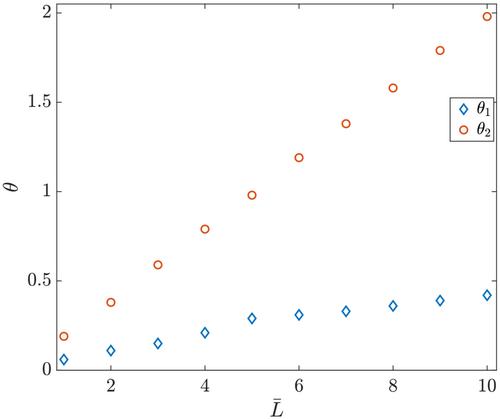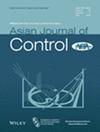通过直流编程优化正马尔可夫跃迁线性系统的概率率
IF 2.7
4区 计算机科学
Q2 AUTOMATION & CONTROL SYSTEMS
引用次数: 0
摘要
我们通过优化正马尔可夫跃迁线性系统的过渡概率率来研究其稳定问题。通过利用正余弦的凸特性和处理凸函数差的标准数学编程,我们证明过渡概率率综合问题可以通过凸差分(DC)编程来解决。我们用一个数值示例来说明我们结果的有效性。本文章由计算机程序翻译,如有差异,请以英文原文为准。

Probability rate optimization of positive Markov jump linear systems via DC programming
We investigate the stabilization problem of positive Markov jump linear systems by optimizing their transition probability rates. By using the convex property of posynomials and the standard mathematical programming that deals with the difference in convex functions, we show that transition probability rate synthesis problems can be solved via difference-of-convex (DC) programming. A numerical example is used to illustrate the effectiveness of our results.
求助全文
通过发布文献求助,成功后即可免费获取论文全文。
去求助
来源期刊

Asian Journal of Control
工程技术-自动化与控制系统
CiteScore
4.80
自引率
25.00%
发文量
253
审稿时长
7.2 months
期刊介绍:
The Asian Journal of Control, an Asian Control Association (ACA) and Chinese Automatic Control Society (CACS) affiliated journal, is the first international journal originating from the Asia Pacific region. The Asian Journal of Control publishes papers on original theoretical and practical research and developments in the areas of control, involving all facets of control theory and its application.
Published six times a year, the Journal aims to be a key platform for control communities throughout the world.
The Journal provides a forum where control researchers and practitioners can exchange knowledge and experiences on the latest advances in the control areas, and plays an educational role for students and experienced researchers in other disciplines interested in this continually growing field. The scope of the journal is extensive.
Topics include:
The theory and design of control systems and components, encompassing:
Robust and distributed control using geometric, optimal, stochastic and nonlinear methods
Game theory and state estimation
Adaptive control, including neural networks, learning, parameter estimation
and system fault detection
Artificial intelligence, fuzzy and expert systems
Hierarchical and man-machine systems
All parts of systems engineering which consider the reliability of components and systems
Emerging application areas, such as:
Robotics
Mechatronics
Computers for computer-aided design, manufacturing, and control of
various industrial processes
Space vehicles and aircraft, ships, and traffic
Biomedical systems
National economies
Power systems
Agriculture
Natural resources.
 求助内容:
求助内容: 应助结果提醒方式:
应助结果提醒方式:


